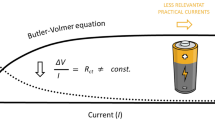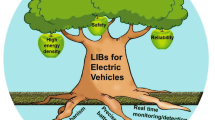Abstract
The article is firstly focused on thermal analysis of electrolytic double layer capacitor (EDLC) operated at repeated cycles of charging and discharging. This process is mostly applied at switched mode power supplies (SMPS), where electrolytic capacitor within given period of operation acts as energy storage element (discharge period). Charging and discharging process of EDLC may cause additional heating, which consequently influences capacitor’s lifetime. This parameter (lifetime) is nowadays very important parameter of EDLC, because operational life of the most of complex power electronic systems is directly influenced by its most critical components, i.e., by electrolytic capacitors. In this paper, the theory necessary for capacitor analysis and analysis of heat transfer is presented. The particular aluminum electrolytic capacitor Nichicon is examined in the paper. The implementation of real model into COMSOL Multiphysics and consequent simulation settings are being described too. Based on the main parameters of target application, the simulation analysis is processed. These results are consequently verified by experimental measurements on a given sample of EDLC. Deviations between measured and simulated data are identified, and optimization steps for better accuracy are also given. Finally, the factors influencing the lifetime of electrolytic capacitors together with calculation of capacitor’s lifetime in power application are described. During lifetime estimation, heat transfer simulation modeling of capacitor is utilized. Presented approach offers acceleration of necessary variables identification, which are hardly to be identified with the use of measurements, e.g., capacitor’s core temperature. Thus, more accurate results regarding lifetime estimation can be achieved.













Similar content being viewed by others
Abbreviations
- \(\mathrm{EDLC}\) :
-
Electrolytic dual layer capacitor
- \(\mathrm{SMPS}\) :
-
Switched model power supply
- C :
-
The capacitance of capacitor
- \(\varepsilon _{r}\) :
-
Relative permittivity of dielectric
- \(\varepsilon _{0}\) :
-
Vacuum permittivity
- S :
-
Surface of electrodes
- d :
-
Distance of electrodes
- \(U_{1}\) :
-
Initial capacitor voltage
- \(U_{2}\) :
-
Final capacitor voltage
- Q :
-
Is the electric charge
- C :
-
Capacity of an ideal capacitor
- U :
-
Voltage of capacitor
- \(Q_{k}\) :
-
Heat flux
- k :
-
Thermal conductivity of the material,
- \(A_{x }\) :
-
Cross section of the material at point x
- \(\mathrm{d}T/\mathrm{d}x\) :
-
Temperature gradient
- \(Q_{c}\) :
-
Heat flux
- \(h_{c}\) :
-
Transfer coefficient
- \(A_{s }\) :
-
The area of the body
- \(T_{S}\) :
-
Temperature of the surface of the body
- \(T_{a}\) :
-
The surroundings temperature
- n :
-
Normal vector,
- \(\vee T_{1,}\vee T_{2 }\) :
-
Temperature gradients at the interface of subdomains
- \(q_{0}\) :
-
Heat source
- h :
-
Coefficient of heat flow
- \(T_\mathrm{inf}\) :
-
External body temperature
- C :
-
Product of the coefficient of radiation and Stefan-Boltzmann constant
- Ta :
-
temperature of environment
- \(L_{0}\) :
-
Specified lifetime (hour) with the rated voltage applied (or the rated ripple current superimposed to a DC voltage) at the upper limit of the category temperature. Refer to the lifetime specifications of individual products
- \(L_{X}\) :
-
Estimated life on actual usage (hour)
- \(T_{0}\) :
-
Maximum Category Temperature (K)
- \(T_{a}\) :
-
Actual Ambient Temperature (K)
- P :
-
Internal power dissipation
- \(I_{R}\) :
-
Ripple current
- \(\mathrm{ESR}\) :
-
Equivalent series resistance
- \(\beta \) :
-
Radiation constant (Stefan - Boltzmann)
- A :
-
Surface area of can case
- \(\varDelta T\) :
-
Temperature rise due to ripple current
- \(I_{0R}\) :
-
Operating ripple current actually flowing in capacitor
- \(I_{0}\) :
-
Rated ripple current of capacitor
- \(\varDelta T_{0}\) :
-
Rise in internal temperature due to the rated ripple current
- \(K_{I}\) :
-
Empirical safety factor
- \(U_{a}\) :
-
Actual operating voltage
- \(U_{R}\) :
-
Rated voltage
- L :
-
Resulting lifetime
- \(L_{0}\) :
-
Lifetime at nominal ripple and temperature conditions.
- \(i_{C}(t)\) :
-
Commom capacitor current
- \(i_{C1}(t)\) :
-
Current of capacitor C110
- \(i_{C2}(t)\) :
-
Current of capacitor C111
- \(i_{C3}(t)\) :
-
Current of capacitor C112
- \(i_\mathrm{meas}(t)\) :
-
Measured current
- \(i_{1}(t)\) :
-
Output current of boost stage
- \(i_{2}(t)\) :
-
Input current of DC/DC converter
- \(I_\mathrm{riple}\) :
-
Common ripple current
- \(I_\mathrm{meas}\) :
-
r.m.s. value of measured current \({i}_{\mathrm{meas}}\hbox {(t)}\)
References
AB., COMSOL. (2008) COMSOL multiphysics user’s guide. s.l. : COMSOL AB., November 2008
Heat transfer module user’s guide. s.l. : COMSOL AB., (2008)
Coulson JM, Turgeon E (1990) Chemical engineering. Pergamon Press, New York, p 1990
Salomon E, Pierre M (1983) ) Heat transfer remowal from electronic devices (original: Odvod tepla z elektronických zařízení). SNTL-Nakladatelství technické literatury, Prague
Ellison Gordon N (2011) Thermal computations for electronics. CRC Press, Boca Raton
Fukátko T, Fukátko J (2006) Heat and cooling in electronics II (original: Teplo a chlazení v elektronice II). BEN-technická literatura, Prague
http://www.illinoiscapacitor.com/. Accessed 10 Sept 2015
Frivaldsky M, Cuntala J, Spanik P (2014) Simple and accurate thermal simulation model of supercapacitor suitable for development of module solutions. Int J Therm Sci 84:34–47
Hruska K, Kindl V, Pechanek R (2012) Design and FEM analyses of an electrically excited automotive synchronous motor, In: Proceedings of Power Electronics and Motion Control Conference (EPE/PEMC), 2012 15th International, Novi Sad, 2012, pp LS2e.2-1-LS2e.2-7
Sobra J, Kindl V, Skala B (2014) Determination of the force caused by broken rotor bar and static eccentricity in an induction machine, In: Proceedings of ELEKTRO, 2014, Rajecke Teplice, pp 375-378
Skala B, Kindl V (2013) Electromagnetic coil gun—construction and basic simulation. In: Březina T, Jabloński R (eds) Mechatronics 2013—Recent technological and scientific advances, chapter. Springer, Switzerland, pp 87–83
Spanik P, Frivaldsky M, Drgona P, Cuntala J, Glapa N (2014) Design procedure of simple and accurate model of electric double layer capacitor (EDLC) targeting fast verification purposes of heat transfer simulations. Electr Eng 96(2):121–134
Spanik P, Cuntala J, Frivaldsky M et al (2012) Investigation of heat transfer of electronic system through utilization of novel computation algorithms. Elektronika IR Elektrotechnika 7:31–36
http://www.illinoiscapacitor.com/tech-center/life-calculators.aspx. Accessed 10 Sept 2015
http://www.nichicon.co.jp/english/products/pdf/aluminum.pdf. Accessed 25 June 2014
Lee B-H, Kim C-E, Park K-B, Moon G-W (2007) A new single-stage PFC AC/DC converter with low link-capacitor voltage. J Power Electron 7(4):328–335
Park K-H, Yi K-H (2013) Cost-effective power system with an electronic double layer capacitor for reducing the standby power consumption of consumer electronic devices. J Power Electr 13(3):329–338
Grman L, Hrasko M, Kuchta J (2011) Single phase PWM rectifier in traction application. J Electr Eng 62(4):206–212
Kovacova I, Kovac D (2009) Inductive coupling of power converter’s EMC. Acta Polytech Hung 6(2):41–53
Zhou L, Zhu B, Luo Q, Chen S (2014) Interleaved non-isolated high step-up DC/DC converter based on the diode-capacitor multiplier. IET Power Electr 7(2):390–397
http://www.radio-electronics.com/ [Online]. Accessed 21 Oct 2015
Kúdelčík J, Hockicko P (2011) Basics of physics (original: Základy Fyziky). Žilinská univerzita v Žiline, Žilina
NIC COMPONENTS CORP, General Information For Non Solid Aluminum Electrolytic Capacitors, [Online]
http://www.niccomp.com/help/techinfo/AlumApplInfoCautions.pdf. Accessed 5 Feb 2013
Nichocon Corporation. General Descriptions of Aluminum Electrolytic Capacitors
Acknowledgements
The authors wish to thank to Slovak grant agency VEGA for project No. 1/0558/14 - Research of methodology for optimization of lifetime of critical components in perspective electronic appliances through the use of system level simulation, and for No. 1/0579/14—Research of topological structures of segments of power electronic system for wireless energy transfer. Experimental verifications and simulation experiments were made with the help of financial support to R&D operational program Centre of excellence of power electronics systems and materials for their components No. OPVaV-2008/2.1/01-SORO, ITMS 26220120003 and ITMS 26220120046 funded by European regional development fund (ERDF).
Author information
Authors and Affiliations
Corresponding author
Rights and permissions
About this article
Cite this article
Frivaldsky, M., Cuntala, J., Spanik, P. et al. Investigation of thermal effects and lifetime estimation of electrolytic double layer capacitors during repeated charge and discharge cycles in dedicated application. Electr Eng 100, 11–25 (2018). https://doi.org/10.1007/s00202-016-0482-2
Received:
Accepted:
Published:
Issue Date:
DOI: https://doi.org/10.1007/s00202-016-0482-2




